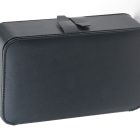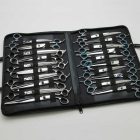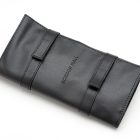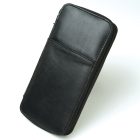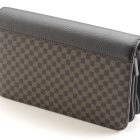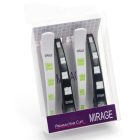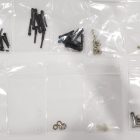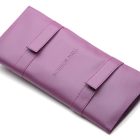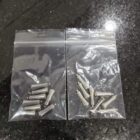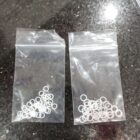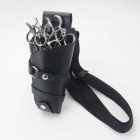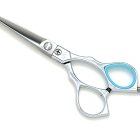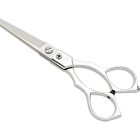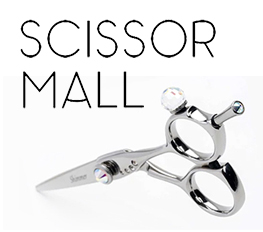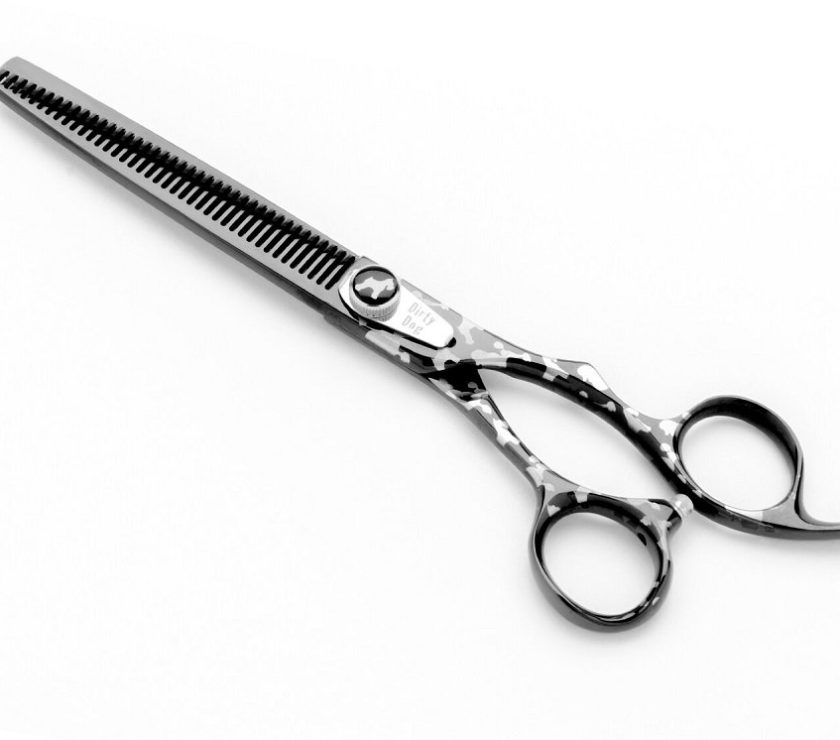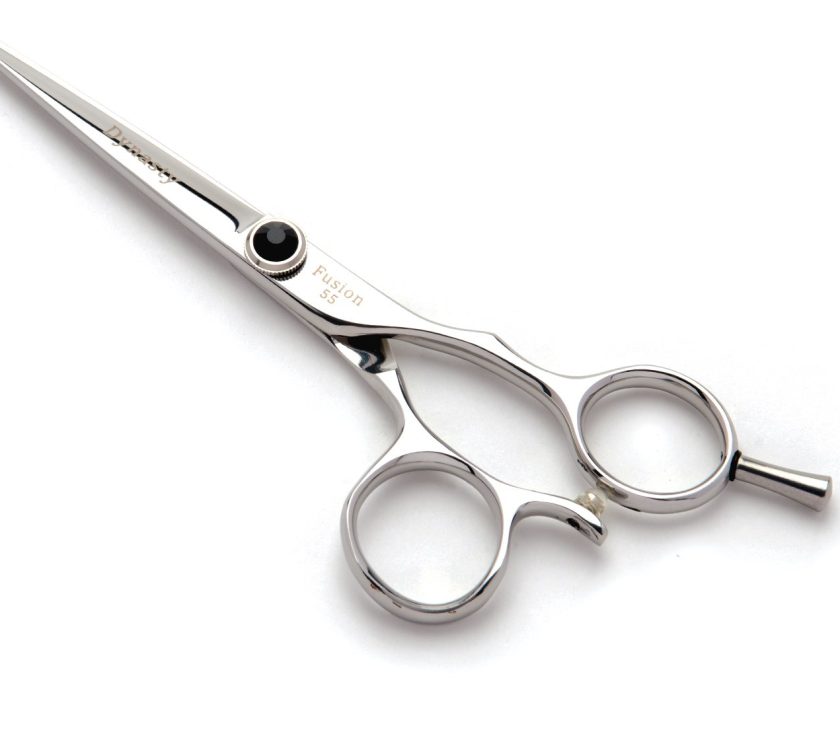The Scissors Every Stylist Needs to Know About
Imagine trying to create clean, sharp lines or soft, blended layers with the wrong tool. The cut won’t sit right, the finish looks sloppy, and suddenly you’re questioning your skills when the real issue is the shears in your hand. If you’ve ever struggled with dull blades or wondered which type of scissors fits your style of cutting, you’re not alone.
This guide will break down the main kinds of scissors hairdressers use, explain when and why to use each, and help you choose the right pair to level up your craft. If you want a step-by-step buyer’s walkthrough, see our guide to shears.

Types of Scissors Hairdressers Rely On
Hairdressers don’t just own one pair of scissors. Each type is designed for a specific technique or result. Here are the main categories:
Classic Cutting Scissors
These are the standard, go-to shears for blunt cuts and straight lines. They’re versatile, precise, and the backbone of any kit.
- Best for: one-length cuts, bob styles, trims
- Sizes: usually 5.5 to 6 inches
- Benefits: accuracy and control
Thinning and Texturizing Scissors
Thinning scissors have teeth on one or both blades to reduce bulk and soften lines. Texturizing scissors help create movement and remove weight without shortening length.
- Best for: blending, softening blunt lines, managing thick hair
- Benefits: smoother transitions, natural-looking layers
- Explore: Thinning scissors and texturizing scissors

Swivel Thumb Scissors
Designed with ergonomics in mind, these allow your thumb to rotate naturally, reducing strain on your wrist and hand.
- Best for: stylists cutting all day, repetitive work
- Benefits: comfort, reduced risk of hand fatigue
- Explore: Ergonomic and swivel options
Left-Handed Scissors
True left-handed scissors are engineered with reversed blades, not just flipped handles. This makes a huge difference in precision and ease of use for left-handed stylists.
- Best for: left-handed professionals
- Benefits: comfort, accuracy, control
Specialty Shears (Slide, Point, Dry Cutting)
Advanced techniques call for specialized tools. Dry cutting shears, for example, are sharper and designed for cutting hair when dry without fraying. Point and slide cutting shears allow for textured, feathered results.
- Best for: advanced techniques, creative styles
- Benefits: clean results, tailored finish
- Explore: Dry cutting shears
How to Choose the Right Scissors for Your Cutting Style
Here’s the thing: the right scissors depend on how you cut and who you’re cutting. A stylist who specializes in precision bobs has different needs than someone who loves creating textured, airy layers.
- For precision and control: Go with classic cutting scissors, around 5.5 inches.
- For texturizing and blending: Add a pair of thinning or texturizing shears.
- For heavy cutting schedules: Swivel thumb scissors protect your wrists and thumbs.
- For creative or advanced techniques: Consider dry cutting or point cutting shears.
- For left-handed stylists: Always choose true left-handed shears, not adapted versions.
Tip: It’s better to invest in 2–3 pairs that suit your style rather than one “all-purpose” shear that doesn’t excel at any single technique.
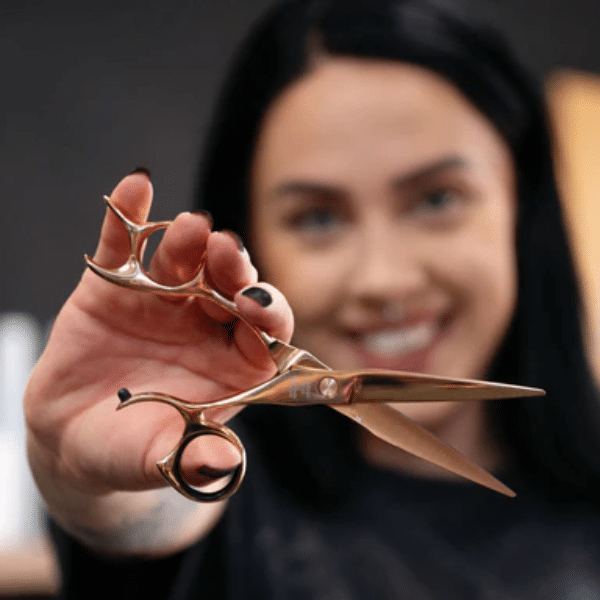
Cast vs Forged: What’s the Difference?
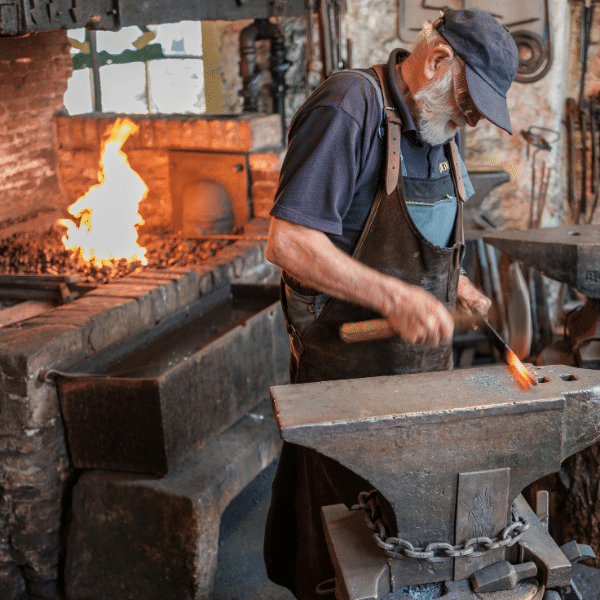
Many stylists ask whether cast or forged scissors are better. The answer comes down to performance and durability.
- Cast scissors: Made by pouring molten steel into a mold. Affordable, lighter, but less durable long-term.
- Forged scissors: Hammered and shaped by hand from solid steel. Stronger, longer-lasting, and often sharper.
If you’re just starting, cast shears can be a budget-friendly entry point. But if you’re serious about your career, forged shears are the investment that pays off in performance and longevity.
Building Trust with Experience
At Scissor Mall, we’ve spent more than 40 years helping stylists, barbers, and groomers find the right shears for their work. We’ve seen the difference it makes when a professional finally picks up a tool that feels natural in their hand and delivers the results they’ve been chasing. That’s why every pair we offer comes with a lifetime warranty and personalized support if you need help deciding.
A Natural Next Step
If you’ve read this far, chances are you’re serious about finding the right shears. Whether you’re building your first kit or upgrading after years behind the chair, having the right tools makes all the difference.
Ready to take the next step? Explore our full range of professional shears or schedule a quick consultation to match scissors to your style and budget.
✅ Book a Consultation
FAQs About Professional Hairdressing Scissors
What size scissors should I buy?
The most common size for everyday use is between 5.5 and 6 inches. These sizes offer control and precision, which makes them ideal for blunt cuts and most standard techniques. Longer scissors, such as 7 inches or more, are often preferred by barbers because they allow for larger, cleaner sections, especially in scissor-over-comb cutting. Smaller shears, around 5 inches, are sometimes used for detail work near the ears or hairline. Choosing the right size comes down to comfort in your hand and the type of work you do most often.
How often should I sharpen my scissors?
On average, every 3 to 6 months is a good rule of thumb, but it depends heavily on how often you cut hair. A stylist working full-time may need sharpening more frequently, while a part-time stylist may go longer. You’ll know it’s time when the blades start folding or pushing hair instead of cutting cleanly. Always use a professional sharpening service. DIY sharpening kits or untrained services can permanently damage the blade edge, shortening the life of your scissors. For signs it’s time, see this guide on sharpening indicators.
Can I use the same scissors for wet and dry cutting?
You can, but it’s not recommended if you want your tools to last. Dry cutting shears are specifically engineered with sharper, finer edges to cut cleanly through dry hair, which is more resistant than wet hair. Using a regular wet cutting scissor for dry cutting can cause fraying and split ends, and it dulls the blades much faster. Ideally, invest in at least one pair of shears dedicated to dry cutting if you often work with dry hair techniques.
What’s the difference between thinning and texturizing scissors?
Both look similar but serve different purposes. Thinning scissors usually have 30 to 40 teeth and are used to remove bulk, making thick hair easier to manage. They cut a significant amount of hair with each snip. Texturizing scissors, on the other hand, have fewer teeth (around 10 to 20), and they’re designed to add movement and softness without taking out too much hair. If you want to blend harsh lines and create a more natural finish, reach for texturizing scissors. If your client has heavy, unmanageable hair, thinning scissors will be your go-to. For a deeper breakdown, see our comparison of thinners vs texturizers.
Are expensive scissors worth it?
Yes. Professional-quality shears may cost more upfront, but they’re crafted from higher-grade steel, which means they stay sharper for longer, cut more smoothly, and put less strain on your hand. They also last years if cared for properly. Cheap scissors often need replacing within months, and they can cause hand fatigue or damage hair with uneven cuts. Over time, investing in quality shears is not only better for your work but also saves you money.
Do left-handed stylists really need special scissors?
Absolutely. True left-handed scissors are not just mirrored handles; the blades themselves are reversed. This design ensures that left-handed stylists can see the cutting line clearly and cut comfortably without awkward wrist angles. Using right-handed scissors in your left hand leads to poor control, added strain, and potential long-term discomfort. If you’re left-handed, investing in proper shears makes cutting smoother, safer, and far more enjoyable.
Invest in Tools That Elevate Your Work
Choosing the right scissors isn’t just about comfort, it’s about confidence in every cut. With the right pair, your work looks cleaner, your clients notice the difference, and your hands thank you at the end of a long day.
Explore Scissor Mall’s selection today and find the pair that matches your style, skill, and vision.
Related Reads:
- What Kind of Scissors Do Hairdressers Use? - October 15, 2025
- What’s the Difference Between Hair Cutting Scissors and Shears? - October 8, 2025
- What Is the Difference Between Dog Grooming Shears and Human Shears? - August 26, 2025


